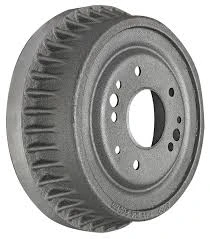
-
 Afrikaans
Afrikaans -
 Albanian
Albanian -
 Amharic
Amharic -
 Arabic
Arabic -
 Armenian
Armenian -
 Azerbaijani
Azerbaijani -
 Basque
Basque -
 Belarusian
Belarusian -
 Bengali
Bengali -
 Bosnian
Bosnian -
 Bulgarian
Bulgarian -
 Catalan
Catalan -
 Cebuano
Cebuano -
 Corsican
Corsican -
 Croatian
Croatian -
 Czech
Czech -
 Danish
Danish -
 Dutch
Dutch -
 English
English -
 Esperanto
Esperanto -
 Estonian
Estonian -
 Finnish
Finnish -
 French
French -
 Frisian
Frisian -
 Galician
Galician -
 Georgian
Georgian -
 German
German -
 Greek
Greek -
 Gujarati
Gujarati -
 Haitian Creole
Haitian Creole -
 hausa
hausa -
 hawaiian
hawaiian -
 Hebrew
Hebrew -
 Hindi
Hindi -
 Miao
Miao -
 Hungarian
Hungarian -
 Icelandic
Icelandic -
 igbo
igbo -
 Indonesian
Indonesian -
 irish
irish -
 Italian
Italian -
 Japanese
Japanese -
 Javanese
Javanese -
 Kannada
Kannada -
 kazakh
kazakh -
 Khmer
Khmer -
 Rwandese
Rwandese -
 Korean
Korean -
 Kurdish
Kurdish -
 Kyrgyz
Kyrgyz -
 Lao
Lao -
 Latin
Latin -
 Latvian
Latvian -
 Lithuanian
Lithuanian -
 Luxembourgish
Luxembourgish -
 Macedonian
Macedonian -
 Malgashi
Malgashi -
 Malay
Malay -
 Malayalam
Malayalam -
 Maltese
Maltese -
 Maori
Maori -
 Marathi
Marathi -
 Mongolian
Mongolian -
 Myanmar
Myanmar -
 Nepali
Nepali -
 Norwegian
Norwegian -
 Norwegian
Norwegian -
 Occitan
Occitan -
 Pashto
Pashto -
 Persian
Persian -
 Polish
Polish -
 Portuguese
Portuguese -
 Punjabi
Punjabi -
 Romanian
Romanian -
 Russian
Russian -
 Samoan
Samoan -
 Scottish Gaelic
Scottish Gaelic -
 Serbian
Serbian -
 Sesotho
Sesotho -
 Shona
Shona -
 Sindhi
Sindhi -
 Sinhala
Sinhala -
 Slovak
Slovak -
 Slovenian
Slovenian -
 Somali
Somali -
 Spanish
Spanish -
 Sundanese
Sundanese -
 Swahili
Swahili -
 Swedish
Swedish -
 Tagalog
Tagalog -
 Tajik
Tajik -
 Tamil
Tamil -
 Tatar
Tatar -
 Telugu
Telugu -
 Thai
Thai -
 Turkish
Turkish -
 Turkmen
Turkmen -
 Ukrainian
Ukrainian -
 Urdu
Urdu -
 Uighur
Uighur -
 Uzbek
Uzbek -
 Vietnamese
Vietnamese -
 Welsh
Welsh -
 Bantu
Bantu -
 Yiddish
Yiddish -
 Yoruba
Yoruba -
 Zulu
Zulu
how to tell if you have drum or disc brakes
How to Tell if You Have Drum or Disc Brakes
When it comes to vehicle maintenance and safety, understanding your braking system is essential. One of the fundamental aspects of your braking system is whether your vehicle is equipped with drum brakes or disc brakes. Each type has its advantages and disadvantages, and knowing which one you have can help you make informed decisions about maintenance, repairs, and upgrades. Here’s how to tell if you have drum or disc brakes.
Visual Inspection
One of the simplest ways to determine what type of brakes your vehicle has is through a visual inspection. You can start this process by safely lifting your car with a jack and securing it with jack stands. Ensure you wear appropriate safety gear, such as gloves and goggles, before getting under the vehicle.
1. Examine the Wheels First, take a look at your wheels. If you can see the brake components directly through the wheel spokes, you likely have disc brakes. Disc brakes have a visible rotor (the round, shiny metal disc) and calipers (the component that holds the brake pads). In contrast, if your wheels are more closed or opaque and you can’t see the rotor clearly, you may have drum brakes.
2. Inspect the Brake Assembly If you’re comfortable getting under your vehicle, you can inspect the brake assembly. Disc brakes use a round rotor, while drum brakes use a cylindrical drum. To find out which you have, look for a round disk that is likely mounted to the hub of the wheel (indicative of disc brakes) or a cylindrical drum (indicative of drum brakes).
Brake Operation Sounds
Another method to determine the type of brakes is to pay attention to the sounds when braking. While this method is indirect, it can still provide clues.
how to tell if you have drum or disc brakes

- Squeaking or Grinding Noise If you hear a squeaking sound when you apply the brakes, this might suggest that your brake pads are worn or that the brake shoes in a drum brake system are deteriorating. Grinding, on the other hand, often signals severe wear and could indicate that a component requires immediate attention.
- Absence of Noise Disc brakes tend to be quieter than drum brakes; however, if you hear a faint noise only when you press the brake pedal, this might point to the type of braking system.
Check the Owner’s Manual
The easiest and most reliable way to confirm the type of brakes you have is to check the owner’s manual of your vehicle. The manual will provide detailed specifications about your car's braking system, including whether it uses drum or disc brakes. If you do not have a physical copy of your manual, many manufacturers provide digital copies online.
Consult a Mechanic
If you're still uncertain, or if you want a professional opinion, don’t hesitate to consult a mechanic. A certified technician can easily identify your braking system type and provide you with valuable insights into the condition of your brakes. This is especially important if you are considering upgrades or replacements.
Conclusion
Understanding whether your vehicle has drum or disc brakes is crucial for effective maintenance and safety. Whether you use a visual inspection, pay attention to the sounds your vehicle makes, consult your owner’s manual, or reach out to a professional, knowing which braking system you have can make an immense difference in how you approach vehicle care. In addition, this knowledge can guide you in understanding replacement parts and making informed decisions when discussing service options with your mechanic. Remember, safety is paramount, and being informed about your braking system is an essential part of responsible vehicle ownership.
-
What Are Drum BrakesNewsJul.07,2025
-
Understanding Brake Drum MaterialNewsJul.07,2025
-
Semi-Trailer Brake Drum: A Key Component for Extreme Loads and Long-Distance TransportNewsJul.07,2025
-
Drum Brake Pads for SaleNewsJul.07,2025
-
Brake Drums for SaleNewsJul.07,2025
-
Brake Drum ManufacturerNewsJul.07,2025
-
Aluminum Brake Drums: The Future of High-Performance CarsNewsJul.07,2025
